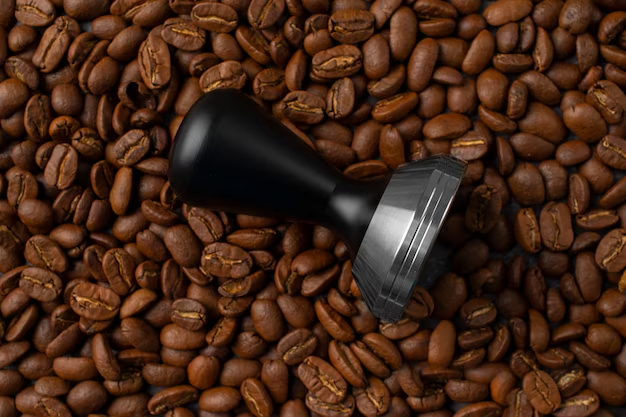Is Storing Coffee in the Refrigerator the Best Way to Keep It Fresh?
For coffee enthusiasts, enjoying a perfectly brewed cup of coffee is a daily ritual, and keeping coffee fresh is integral to that enjoyment. A common question that arises is whether storing coffee in the refrigerator helps maintain its freshness. This guide dives into the factors affecting coffee freshness, how refrigeration might play a role, and tips on optimal storage methods to help you savor every sip of your favorite brew.
☕ What Affects Coffee Freshness?
The Culprits of Coffee Staleness
Several factors contribute to the staleness of coffee:
- Oxidation: Once roasted, coffee beans start to oxidize when exposed to air, which diminishes flavor over time. Grinding coffee accelerates this process due to increased surface area.
- Moisture: Coffee beans are hygroscopic, meaning they absorb moisture from the environment. Excessive moisture can lead to a flat taste.
- Light: Direct sunlight or consistent artificial lighting can degrade the quality of coffee beans.
- Temperature Changes: Fluctuations in temperature can stimulate the release of oils and expedite the degradation process.
Understanding these elements is essential when choosing the best storage methods.
The Role of Roasting and Grinding
Coffee begins to lose its freshness the moment it’s roasted. Whole beans retain their freshness longer than ground coffee because they provide less surface area for these deteriorating processes.
🌡️ Does Refrigeration Keep Coffee Fresh?
Factors to Consider
When thinking about storing coffee in the refrigerator, it's essential to weigh several considerations:
- Moisture Levels: Refrigeration can increase the chances of condensation and moisture exposure, potentially leading to spoilage.
- Odor Absorption: Coffee is prone to absorbing odors from surrounding foods, which can affect its flavor profile.
- Temperature Fluctuation: Frequent opening and closing of the refrigerator door can cause fluctuating temperatures, impacting the freshness negatively.
Should You Refrigerate Coffee?
Most expert consensus leans towards avoiding refrigeration for coffee storage. Here's why:
- Flavor Compromise: The cold temperature of a fridge can lead to condensation, affecting the coffee’s flavor profile negatively.
- Consistency Loss: The change in environment from room temperature to cold can cause unwanted changes in beans' texture and aroma.
🏡 Best Practices for Storing Coffee at Home
The Ideal Storage Environment
To keep your coffee fresh and flavorful:
- Airtight Containers: Use opaque, airtight containers to prevent exposure to air and light. Ceramic, glass, or stainless steel containers can work effectively.
- Cool, Dark Place: Store these containers in a pantry or cupboard away from moisture and light.
- Buy Small Quantities: Purchase coffee in smaller quantities to ensure it is consumed while fresh, rather than storing large amounts for extended periods.
Ground Coffee vs. Whole Beans
For those who value peak freshness:
- Whole Beans: Optimize flavor retention by buying whole beans and grinding only what you need before brewing.
- Fresher is Better: Consume your coffee beans within two weeks of roasting for the best taste experience.
🚫 Common Coffee Storage Mistakes
- Using the Freezer Incorrectly: Freezing coffee can preserve freshness for extended periods, but improper sealing can lead to freezer burn, altering the taste.
- Pantry Top Shelf: Storing coffee near heat sources like a stove top or windows should be avoided as it speeds up staling.
- Transparent Containers: While they may be aesthetically pleasing, transparent containers fail to protect coffee from light exposure.
📌 Quick Coffee Storage Tips
To recap the key strategies for keeping your coffee at its tastiest:
- 🏠 Store at Room Temperature: Opt for a pantry or cupboard.
- 👓 Use Opaque, Airtight Containers: Protect from air and light.
- 📅 Purchase Smaller Amounts & Use Promptly: Maximize freshness with regular turnover.
- ⚡ Whole Beans Retain Flavor Longer: Grind fresh for each brew.
🔄 Related Subtopics
The Impact of Different Storage Methods
Exploring alternative methods can further your understanding and refinement of coffee storage techniques:
- Vacuum Sealing: Investigate how vacuum containers might extend coffee freshness by minimizing air exposure.
- Single-Serve Pods: Consider how pre-packaged pods can maintain flavor consistency.
Coffee Freshness and Brewing Style
Align storage methods with your brewing style to enhance your coffee experience:
- Espresso Enthusiasts: Since espresso highlights flavor nuances, prioritizing whole beans and optimal storage is crucial.
- Cold Brew Lovers: Cold brew involves steeping for extended periods, benefiting from freshly ground, properly stored coffee.
Reflecting on Coffee Storage Insights
Keeping coffee fresh is an art of balancing key factors like air, moisture, and light exposure while understanding how storage methods interact with the physical properties of coffee. While refrigeration might seem like a convenient solution, it often does more harm than good, leading to potential flavor degradation and moisture issues. By employing best practices, such as using airtight containers and storing coffee in cool, dark places, you can ensure that each cup of coffee provides both the freshness and flavor that every enthusiast seeks.
Ultimately, as you delve deeper into exploring your coffee preferences and refining storage techniques, you gain valuable insight into enhancing your daily coffee ritual. So next time you wonder whether to refrigerate your coffee, remember the expert inclination towards room-temperature storage—a small but significant step towards coffee perfection.
